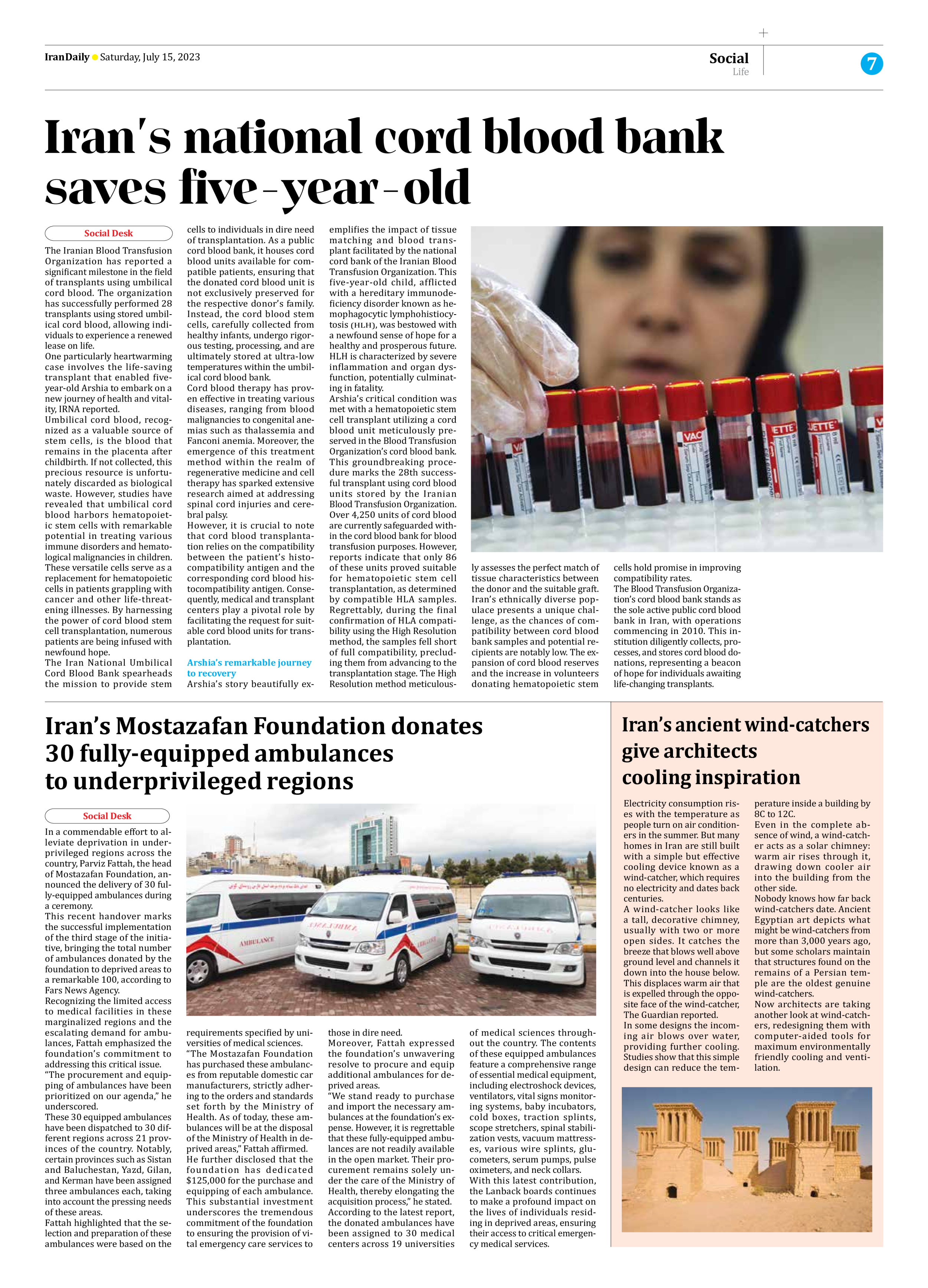
Iran’s national cord blood bank saves five-year-old
The Iranian Blood Transfusion Organization has reported a significant milestone in the field of transplants using umbilical cord blood. The organization has successfully performed 28 transplants using stored umbilical cord blood, allowing individuals to experience a renewed lease on life.
One particularly heartwarming case involves the life-saving transplant that enabled five-year-old Arshia to embark on a new journey of health and vitality, IRNA reported.
Umbilical cord blood, recognized as a valuable source of stem cells, is the blood that remains in the placenta after childbirth. If not collected, this precious resource is unfortunately discarded as biological waste. However, studies have revealed that umbilical cord blood harbors hematopoietic stem cells with remarkable potential in treating various immune disorders and hematological malignancies in children.
These versatile cells serve as a replacement for hematopoietic cells in patients grappling with cancer and other life-threatening illnesses. By harnessing the power of cord blood stem cell transplantation, numerous patients are being infused with newfound hope.
The Iran National Umbilical Cord Blood Bank spearheads the mission to provide stem cells to individuals in dire need of transplantation. As a public cord blood bank, it houses cord blood units available for compatible patients, ensuring that the donated cord blood unit is not exclusively preserved for the respective donor’s family. Instead, the cord blood stem cells, carefully collected from healthy infants, undergo rigorous testing, processing, and are ultimately stored at ultra-low temperatures within the umbilical cord blood bank.
Cord blood therapy has proven effective in treating various diseases, ranging from blood malignancies to congenital anemias such as thalassemia and Fanconi anemia. Moreover, the emergence of this treatment method within the realm of regenerative medicine and cell therapy has sparked extensive research aimed at addressing spinal cord injuries and cerebral palsy.
However, it is crucial to note that cord blood transplantation relies on the compatibility between the patient’s histocompatibility antigen and the corresponding cord blood histocompatibility antigen. Consequently, medical and transplant centers play a pivotal role by facilitating the request for suitable cord blood units for transplantation.
Arshia’s remarkable journey to recovery
Arshia’s story beautifully exemplifies the impact of tissue matching and blood transplant facilitated by the national cord bank of the Iranian Blood Transfusion Organization. This five-year-old child, afflicted with a hereditary immunodeficiency disorder known as hemophagocytic lymphohistiocytosis (HLH), was bestowed with a newfound sense of hope for a healthy and prosperous future. HLH is characterized by severe inflammation and organ dysfunction, potentially culminating in fatality.
Arshia’s critical condition was met with a hematopoietic stem cell transplant utilizing a cord blood unit meticulously preserved in the Blood Transfusion Organization’s cord blood bank. This groundbreaking procedure marks the 28th successful transplant using cord blood units stored by the Iranian Blood Transfusion Organization.
Over 4,250 units of cord blood are currently safeguarded within the cord blood bank for blood transfusion purposes. However, reports indicate that only 86 of these units proved suitable for hematopoietic stem cell transplantation, as determined by compatible HLA samples. Regrettably, during the final confirmation of HLA compatibility using the High Resolution method, the samples fell short of full compatibility, precluding them from advancing to the transplantation stage. The High Resolution method meticulously assesses the perfect match of tissue characteristics between the donor and the suitable graft.
Iran’s ethnically diverse populace presents a unique challenge, as the chances of compatibility between cord blood bank samples and potential recipients are notably low. The expansion of cord blood reserves and the increase in volunteers donating hematopoietic stem cells hold promise in improving compatibility rates.
The Blood Transfusion Organization’s cord blood bank stands as the sole active public cord blood bank in Iran, with operations commencing in 2010. This institution diligently collects, processes, and stores cord blood donations, representing a beacon of hope for individuals awaiting life-changing transplants.







